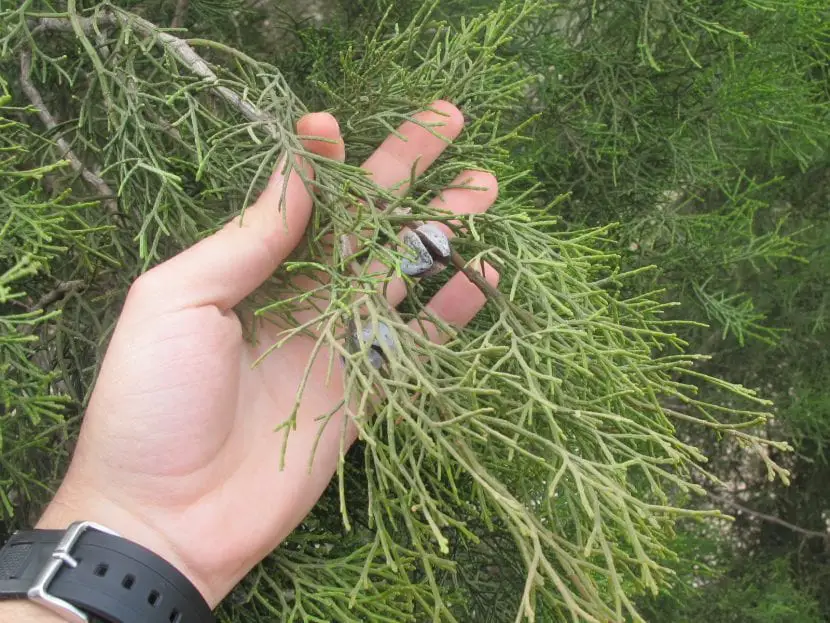
If you like conifers but are tired of always seeing them in your area, we encourage you to meet the african larch. This is a magnificent plant that is not very difficult to care for that you can enjoy from the first moment you plant it in the ground.
Although its growth rate is rather slow, it is so adaptable and resistant that it is well worth it give it a try.
Origin and characteristics

The African larch, also known as the blackberry juniper, is an endemic conifer of northwestern Africa whose scientific name is Tetraclinis articulated. In Spain we also have a natural population, in the Sierras de Cartagena. It grows to a height of 5-9 meters, although it can reach 16m. Its trunk is thin, with a thickness not exceeding 40cm in diameter. The glass is ovate or conical and clear. The leaves are squamiform, 1-5mm long, and the young are needle-like and sharp.
Cones, both male and female, appear at the ends of the branches. The male ones measure 0,5cm, and contain 4 pollen sacs; the female ones are globose in shape and are made up of four pointed scales. The seeds are bialate or trialate, measuring 6-8mm long by 1-1,5mm wide.
What are their cares?

If you dare to have a copy, we recommend that you provide it with the following care:
- Location: outside, in full sun.
- Earth:
- Garden: fertile, with good drainage.
- Pot: it is not a plant that can be in a pot for a long time, but for a few years it can be had with a universal growing medium.
- Irrigation: 2-3 times a week in summer, and a little less the rest of the year.
- Subscriber: from early spring to late summer with ecological fertilizers, once a month.
- Multiplication: by seeds in spring.
- Rusticity: withstands cold and frosts down to -7ºC and warm temperatures of 38-40ºC.
What did you think of the African larch?

